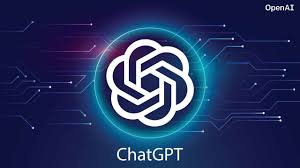In the rapidly evolving world of artificial intelligence, one of the most chat gpt free developments in recent years is the advent of advanced conversational models like ChatGPT. Created by OpenAI, ChatGPT is a large language model that specializes in natural language understanding and generation. It has the ability to engage in human-like conversations, making it a powerful tool in a wide range of applications—from customer service and content creation to personal assistance and education. But what exactly is ChatGPT, how does it work, and what are its potential uses? Let’s dive in and explore this groundbreaking AI technology.
What is ChatGPT?
ChatGPT, based on OpenAI’s GPT (Generative Pre-trained Transformer) model, is a type of artificial intelligence trained to understand and generate text in a conversational manner. It leverages a deep learning architecture known as the transformer model, which has revolutionized the field of natural language processing (NLP). The model is pre-trained on vast amounts of data from books, articles, websites, and other text sources, enabling it to generate coherent, contextually aware responses to a wide array of prompts.
ChatGPT is designed to simulate human-like interactions, which means it can understand questions, hold conversations, write articles, solve problems, and even express creativity in areas like poetry and storytelling. Its flexibility and ability to produce relevant and contextually appropriate text make it an invaluable tool across various domains.
How Does ChatGPT Work?
At its core, ChatGPT relies on a neural network trained using unsupervised learning, a technique where the model learns from patterns in data without being explicitly told what to learn. The training process involves feeding the model large amounts of text data so that it can discern linguistic structures, common phrases, and the relationships between words and ideas.
Here’s a simplified breakdown of how ChatGPT functions:
- Pre-training: During this phase, the model learns from a massive dataset of text, identifying patterns, grammar, and context. It doesn’t have explicit instructions but learns by predicting the next word in a sentence based on the surrounding words.
- Fine-tuning: After pre-training, ChatGPT is fine-tuned with specific tasks in mind. It undergoes supervised training with human-generated examples to improve its ability to generate helpful, accurate, and ethical responses.
- Input and Output: Once trained, ChatGPT receives an input (in the form of a user’s text prompt) and generates a response based on its internal knowledge. It predicts what should come next, taking into account both the immediate context and the broader conversation.
Applications of ChatGPT
ChatGPT’s versatility opens the door to a wide range of potential applications. Some of the most exciting areas where ChatGPT can be deployed include:
1. Customer Support and Service
One of the most practical uses of ChatGPT is in customer service. Businesses can use ChatGPT to power chatbots that handle inquiries, troubleshoot issues, and assist customers 24/7. By automating routine tasks and providing immediate responses, ChatGPT can enhance the customer experience and free up human agents to focus on more complex matters.
2. Content Creation
Whether it’s writing blog posts, crafting product descriptions, or generating creative pieces like poetry or short stories, ChatGPT has proven to be an asset for content creators. It can help writers brainstorm ideas, overcome writer’s block, or even generate entire articles. Its ability to adapt to different tones and styles makes it a versatile tool for any writer.
3. Education and Tutoring
ChatGPT can be used as an educational assistant, providing explanations on complex topics, offering tutoring in subjects like math and science, or helping students with their homework. It can generate quizzes, test questions, and even guide students through problem-solving processes in real-time, making learning more accessible and personalized.
4. Programming and Code Assistance
Developers can use ChatGPT as a code assistant, asking it to write or debug code in various programming languages. It can offer explanations for code snippets, suggest optimizations, and help with troubleshooting, making it a valuable tool for both beginner and advanced programmers.
5. Personal Assistance
In its role as a personal assistant, ChatGPT can help with daily tasks such as managing schedules, setting reminders, making to-do lists, or even composing emails. Its natural language understanding allows users to interact with it in a conversational way, making it a user-friendly alternative to traditional task management systems.
The Benefits of ChatGPT
- Efficiency: ChatGPT’s ability to handle multiple tasks at once makes it incredibly efficient for businesses and individuals alike. It can answer queries, generate content, and automate repetitive tasks, saving both time and resources.
- Scalability: For businesses, ChatGPT can scale effortlessly to meet high demand. Unlike human employees, it can engage with thousands of users simultaneously, making it ideal for environments where speed and volume are important.
- Accessibility: ChatGPT makes advanced AI technology more accessible to people without technical expertise. Its intuitive interface allows anyone to interact with it, whether they’re seeking information, assistance, or creative output.
- Cost-Effective: By automating tasks that would normally require human effort, ChatGPT can help reduce operational costs. This makes it a viable solution for businesses looking to streamline processes and improve productivity.
Challenges and Ethical Considerations
Despite its many benefits, ChatGPT is not without its challenges and limitations. Some of the key concerns surrounding the use of AI in conversation include:
- Bias and Fairness: Like any AI model, ChatGPT is trained on data that may contain biases, which can inadvertently affect its responses. OpenAI has taken steps to mitigate bias, but it remains an ongoing challenge in AI research.
- Accuracy and Reliability: While ChatGPT can generate impressive text, it’s not always factually accurate. It relies on patterns in data, and sometimes it can produce incorrect or misleading information. Users must be cautious when using it for critical tasks that require accuracy.
- Privacy: When interacting with AI models, concerns about privacy and data security are paramount. OpenAI has put safeguards in place to prevent the misuse of user data, but these concerns will continue to be an area of focus as AI technology evolves.
- Dependency: As AI tools like ChatGPT become more integrated into daily life, there’s a risk of over-reliance on them for tasks that require human judgment, creativity, and emotional intelligence. It’s important to strike a balance between using AI as an assistant and preserving human involvement where necessary.
The Future of ChatGPT and Conversational AI
The future of ChatGPT and conversational AI is incredibly exciting. As the technology continues to improve, we can expect even more sophisticated interactions. Future iterations of ChatGPT may have enhanced contextual understanding, the ability to engage in longer and more complex conversations, and more diverse capabilities in areas like emotional intelligence and empathy.
In the coming years, we may see more personalized versions of ChatGPT, where the AI tailors its responses based on an individual’s preferences, past interactions, and personal history. Additionally, as AI models become more energy-efficient and accessible, we can expect wider adoption in industries ranging from healthcare and finance to entertainment and gaming.
Conclusion
ChatGPT represents a significant step forward in the development of conversational AI. Its ability to engage in dynamic, human-like dialogue has transformed the way we think about AI and its role in our daily lives. From revolutionizing customer service to assisting with content creation and education, ChatGPT is poised to continue reshaping various industries.
While challenges remain, the future of AI in conversation holds immense promise. As it continues to evolve, ChatGPT and similar models will become even more integral to our digital landscape, offering new ways to interact, create, and innovate.

